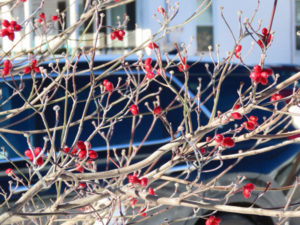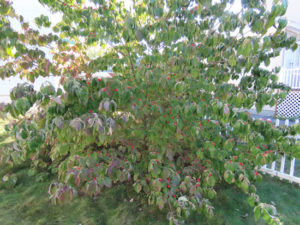(by Melissa Moore)
Homeowners treasure the Flowering Dogwood tree for its beautiful spring display. The showy display is not the true flower. The dogwood’s flower is a small, yellow greenish cluster that is surrounded by the eye-catching bracts. These bracts range in color from white to pink and commonly appear in a set of four. The bract and flower measure 3 inches across and may last up to two weeks. Birds and other pollinators will visit the flowers in spring. Their pollination efforts determine the fruit set that appears later.


Photos by Becky Suomala.
